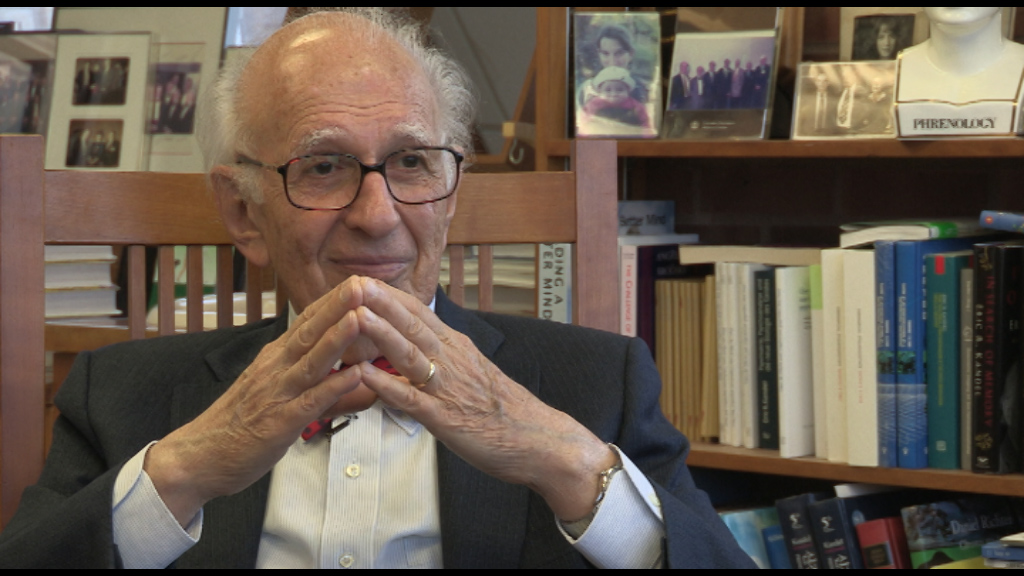NEXT STORY

Investigating the stability of the place cell map as a function of attention
RELATED STORIES

NEXT STORY

Investigating the stability of the place cell map as a function of attention
RELATED STORIES



Ted Abel in the lab, at that particular point, was beginning to take advantage of some of the methodology that Mark Mayford had introduced. Mark Mayford revolutionized the field of gene knockouts in the hippocampus. What we had used initially, what Susumu and I had used initially, were general knockouts in which the gene was knocked out in the whole animal. What Mark Mayford developed is using a CaM kinase promotor, he was able to produce knockouts that were forebrain-specific because that's the only place the CaM kinase promotor was expressed. Moreover he developed the tetracycline system for the brain whereby you could switch a gene on and off. So you not only had regional expression, but you had temporal expression.
And we now used this, Ted Abel used this, on PKA [protein kinase A]. Used a dominant negative inhibitor of PKA, and he found when you did that you interfered with the late phase of LTP, and you got rid of long-term memory. Really a very beautiful experiment in which he clearly identified a component of the late phase of LTP system and cyclic AMP. We were able to go on and show, together with Alcino Silva that CREB was important as a transcription factor.
So that was really sort of a major step forward in allowing us to understand how LTP functions a little bit more, and how it relates to memory storage. And that really inspired us to go one step further. What was really so wonderful about the hippocampus is one now understood that it had an important representation of space, and that was mediated by the place cells. And Cliff Kentros in my lab was interested in studying that, and we collaborated with Bob Muller from Downstate who was really one of the major people in studying place cells.
So I wanted to ask simple questions that the place cell people had never asked. You know, is the stability of place cells dependent on protein synthesis in the long run? We found that it was. We found that it was mediated by dopamine. And then we said, look, this is an unusual map. The visual system is a map, the… Wade Marshal had studied all of these maps, but these are built into the brain. The spatial map is very different. It's a cognitive map. So the capability to form a map is built into the brain, but the specific map, whether you're going to map this room, whether you're going to map next door, that is a learning experience. So presumably, you know, attentional processes must come in at least in the learning component.
Eric Kandel (b. 1929) is an American neuropsychiatrist. He was a recipient of the 2000 Nobel Prize in Physiology or Medicine for his research on the physiological basis of memory storage in neurons. He shared the prize with Arvid Carlsson and Paul Greengard. Kandel, who had studied psychoanalysis, wanted to understand how memory works. His mentor, Harry Grundfest, said, 'If you want to understand the brain you're going to have to take a reductionist approach, one cell at a time.' Kandel then studied the neural system of the sea slug Aplysia californica, which has large nerve cells amenable to experimental manipulation and is a member of the simplest group of animals known to be capable of learning. Kandel is a professor of biochemistry and biophysics at the College of Physicians and Surgeons at Columbia University. He is also Senior Investigator in the Howard Hughes Medical Institute. He was the founding director of the Center for Neurobiology and Behavior, which is now the Department of Neuroscience at Columbia University. Kandel's popularized account chronicling his life and research, 'In Search of Memory: The Emergence of a New Science of Mind', was awarded the 2006 Los Angeles Times Book Award for Science and Technology.
Title: Understanding how LTP functions in relation to memory storage
Listeners: Christopher Sykes
Christopher Sykes is an independent documentary producer who has made a number of films about science and scientists for BBC TV, Channel Four, and PBS.
Tags: Mark Mayford
Duration: 2 minutes, 53 seconds
Date story recorded: June 2015
Date story went live: 04 May 2016